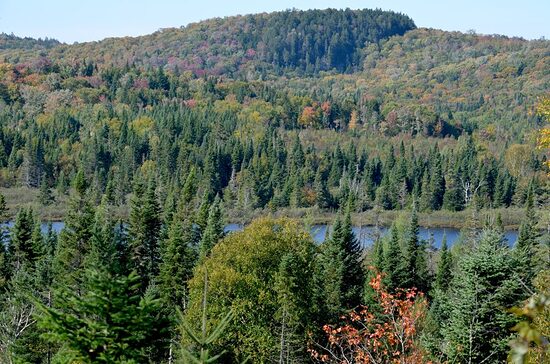NRDC, Nature Canada logging emissions report ‘misleading’: Nighbor
Photo: Annex Business Media
A report from Natural Resources Defense Council (NRDC) and Nature Canada released today on logging emissions in Canada is both misleading and damaging to the country’s forest sector and efforts to manage forest carbon, said Derek Nighbor, head of the Forest Products Association of Canada.
In a statement addressing the report, Nighbor called for constructive solutions to Canada’s growing forest carbon problem caused by worsening droughts, pests and wildfire, and not “deliberately misleading attacks.”
Read Nighbor’s full response below:
“Last week, economists from the Royal Bank of Canada confirmed their expectation that Canada will enter a recession in the first quarter of 2023. This presents unique challenges for working families in rural and northern Canada where economic prospects are often limited to a few key industries like agriculture, energy, mining, and forestry.
“In hundreds of these communities across the country – from Prince George, BC to Corner Brook, NL – the forest sector is a central economic driver and provides jobs to over 200,000 Canadians. Beyond its economic contributions, Canadian forestry is known globally for its responsible harvest practices, high quality products, and its ability to help build a lower carbon economy. Canadian foresters also play an essential role in mitigating growing fire risks, protecting carbon rich wetlands, building with renewable, carbon-storing wood products, and creating environmentally friendly products from what would otherwise be wood waste.
“Nordic countries show us how boreal forests can be managed to maximize carbon storage, even in a warming climate. Although their forests are much smaller, Finland and Sweden harvest six to eight times the timber volume per forested hectare than Canada does. At the same time, the net annual increase in stored carbon in Sweden’s forest is so large it reduces national GHG emissions by 70%. These Nordic governments have done something that Canada has not. In developing their climate plans, these leaders have worked with key industries like forestry to build sector-specific plans to maximize environmental and economic outcomes.
“While we were disappointed to see another misleading report on forestry issued by the US-based Natural Resources Defense Council (NRDC) and Nature Canada, we were not surprised. Both NRDC and Nature Canada fundraise on their anti-Canadian forestry campaign rhetoric.
“It’s worth noting that staff in NRDC’s New York, Washington, and San Francisco offices suggest they care about Canada’s forests and Canadian workers, even as they actively lobby multiple US states to encourage state legislators to restrict Canadian forest products coming into those states. For reasons that are difficult to understand, Nature Canada has chosen to be a willing partner.
“Let’s be clear. Canada has a forest carbon problem that is caused by the worsening natural disturbance patterns we are seeing through drought, pest outbreaks, and catastrophic wildland fire. It’s a growing problem impacting forest health and resiliency, human health and community safety, and we urgently need constructive solutions – not deliberately misleading attacks.
“FPAC continues to call on the federal government to follow the Nordic examples and work with our sector to develop a comprehensive plan for Canadian forestry, even as we contribute to the federal National Adaptation Strategy (NAS), which is a key deliverable and discussion matter at the upcoming COP 27 global climate conference next month in Sharm El Sheikh, Egypt.
“Canadian forestry needs an NAS that minimizes climate-driven disturbance by actively reducing disturbance risk and supporting forest operations that maximize long-term carbon storage performance. This means increased timber harvests that value carbon and forest health – and the creation of new markets for low-grade wood fibre, including via thinning and residual biomass. It also means more forestry – not less. Forestry that will accelerate economic reconciliation with Indigenous communities, keep communities safer from fire risks, support biodiversity conservation and important ecosystem values, and provide good-paying jobs and careers in the rural and northern Canadian communities that desperately need them.”



